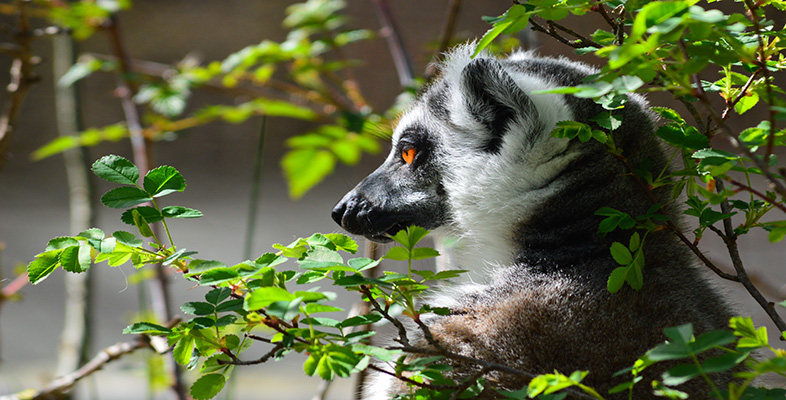2.3 The colugo
In LoM, DA vividly describes one particular evolutionary development associated with tree dwelling - taking to the air [pp. 221-227]. The gliding habit evolved independently in different mammalian lineages and yet the anatomical modifications that allow it are similar in, for example, flying squirrels and the unrelated colugo. In particular, the 'sail of skin' [p. 221], technically termed a patagium, stretches between the limbs - and a good deal further in the colugo, acting as an effective (and to some degree manoeuvrable) gliding membrane.
Colugos are sizeable mammals (as DA says, about the size of a domestic cat) and entirely arboreal. Their record-breaking glides (in excess of 70 m) are achieved without great loss of height. But in trees, they move about rather awkwardly. The patagium is then an encumbrance and there's a limited ability to grasp effectively - the colugo lacks the opposable thumb of primates that I'll talk about more in Section 3. So the benefits of a gliding lifestyle are achieved at a 'cost'. The resulting vulnerability - especially to the Philippine monkey-eating eagle (a species under threat, as are colugos) - may help explain why the colugo is nocturnal.
Taxonomically, the colugo is a bit of a mystery and the historical confusion is evident from its common name - the flying lemur. It neither flies (in that it doesn't flap its limbs) nor is it a lemur (see Section 4). Neither, of course, is it a monkey, despite the name ascribed to its main predator. Having once been placed in the insectivores and then in the bats, it's now ascribed a mammalian order of its own (the Dermoptera, i.e. 'skinwings'), recognising its ancient and distinct evolutionary beginnings. You'll appreciate from LoM p. 223 why few clues as to the colugo's evolutionary affiliations emerge from a study of its remarkable dentition. Its specialised stomach is able to deal with large amounts of leafy vegetation and the large intestine is disproportionately large.
Activity 2
Flying squirrels are not closely related to the colugos but they have features in common. Watch the video sequence below. (a) Identify one similarity and one difference between flying squirrels and colugos. (b) On the evidence of the video sequence, comment briefly on how flying squirrels steer during gliding. (c) Write a sentence or two about the disadvantages and consequences of the gliding habit in flying squirrels.
Answer
(a) The patagium is the most obvious similarity, though it is less extensive in flying squirrels - compare the photographs in LoM pp. 221 and 222. The two mammals differ in that the tail in flying squirrels is free of the patagium and said to act as a rudder in flight, whereas in the colugo, the tail lies within the patagium.
(b) The presumed steering ability of the tail is difficult to discern. Manoeuvrability in flight seems more a consequence of adjustments in how the patagium is positioned. (Braking during landing is said to be achieved by upwards movement of the tail and body, though I couldn't see this on the few examples of landing shown in the video sequence.)
(c) The possession of a patagium limits climbing in the trees (though these flying squirrels seem to scamper about unhindered). Their nocturnal habit is probably related to increased vulnerability during gliding.
